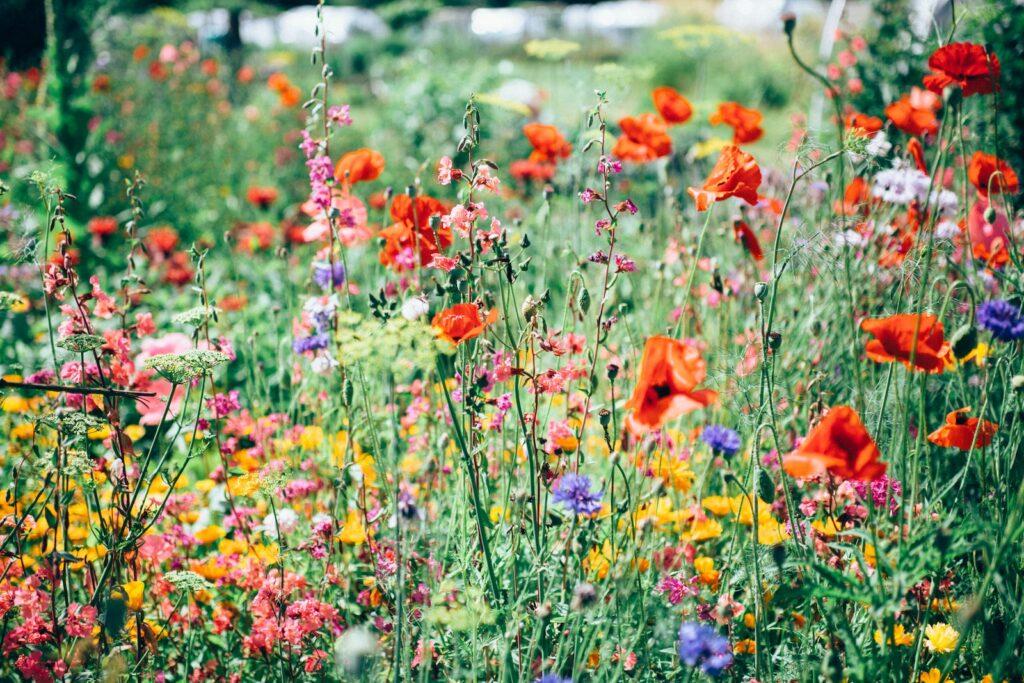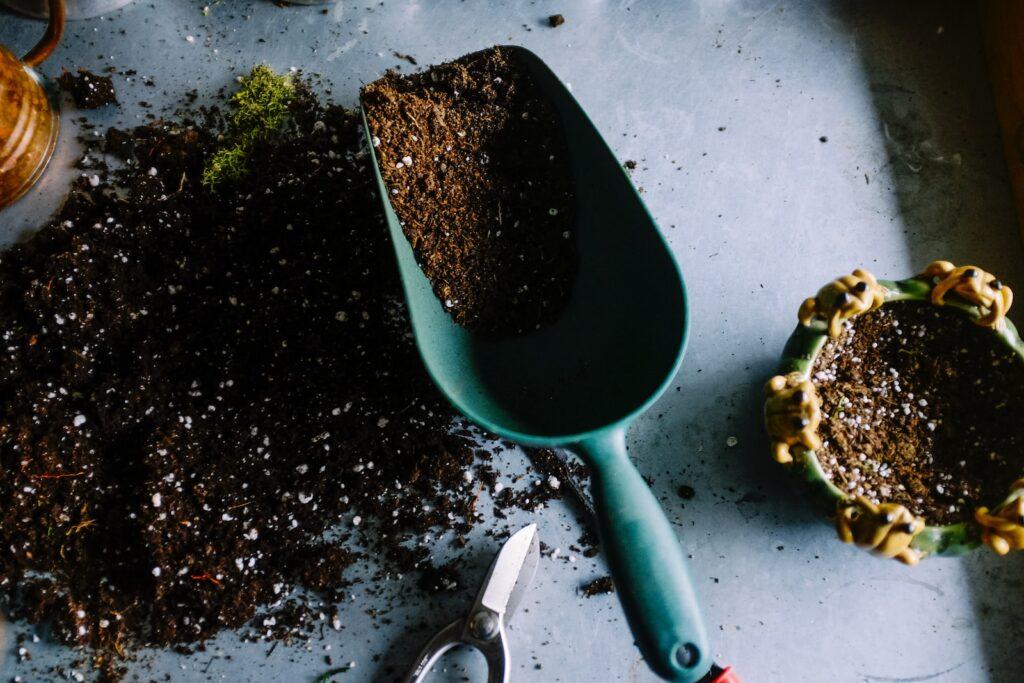Rated & Reviewed is reader-supported. When you buy through links on our site, we may earn an affiliate commission. Learn more.
Are you ready to embark on an exciting journey into the world of organic gardening? Look no further! This ultimate guide is your ticket to becoming a skilled organic gardener and reaping the numerous benefits that come with it.
Imagine being able to step out into your backyard and pluck juicy, pesticide-free vegetables straight from the earth. Picture yourself savoring the flavors of sun-ripened tomatoes, crisp lettuce, and vibrant herbs that you nurtured with your own hands. With this comprehensive guide, you’ll learn everything you need to know about organic gardening.
Why settle for store-bought produce laden with harmful chemicals when you can grow your own? By embracing organic gardening, not only will you enjoy healthier and tastier food, but you’ll also contribute to a more sustainable lifestyle. Say goodbye to synthetic fertilizers and pesticides that harm both your health and the environment.
In this guide, we’ve gathered expert tips and advice from seasoned organic gardeners who have mastered the art of nurturing plants naturally. Whether you’re a beginner or an experienced gardener looking for new insights, this book has got you covered.
So why wait any longer? It’s time to dive headfirst into the captivating world of organic gardening. Unleash your green thumb as we explore endless possibilities together. Get ready for a journey towards self-sufficiency, environmental consciousness, and pure delight in growing your own delicious produce.
Welcome aboard! Let’s begin our adventure with this ultimate guide to organic gardening.

The Benefits of Organic Gardening for the Environment
Reduce Chemical Pollution
One of the key benefits of organic gardening is its ability to reduce chemical pollution. By avoiding synthetic pesticides and fertilizers, organic gardeners help protect the environment from harmful substances that can contaminate soil, water, and air. Traditional gardening methods often rely on chemical inputs that can have detrimental effects on ecosystems and human health. In contrast, organic gardening utilizes natural alternatives such as compost, beneficial insects, and crop rotation to control pests and nourish plants.
Support Biodiversity
Organic gardening plays a crucial role in supporting biodiversity by creating habitats for beneficial insects and wildlife. Unlike conventional farming practices that may harm or disrupt natural ecosystems, organic gardens provide a safe haven for pollinators like bees and butterflies. These vital creatures are essential for the reproduction of many plant species and contribute to the overall health of our environment. Organic gardens often incorporate native plants that attract a diverse range of wildlife, further enhancing biodiversity.
Conserve Water
Water conservation is another significant advantage offered by organic gardening techniques. Efficient irrigation methods are employed to minimize water usage while still ensuring healthy plant growth. For instance, using drip irrigation systems or soaker hoses directly targets the root zones of plants, reducing water waste through evaporation or runoff. Mulching techniques are also commonly employed in organic gardens to retain moisture in the soil and prevent excessive evaporation during hot weather conditions.
Minimize Soil Erosion
Practicing natural soil management techniques is an important aspect of organic gardening that helps minimize soil erosion. Traditional agricultural methods often involve tilling the land extensively, leaving it vulnerable to erosion caused by wind or water runoff. In contrast, organic gardeners employ strategies such as cover cropping and mulching to protect the soil from erosion. Cover crops act as living barriers against wind while their root systems help bind soil particles together. Mulching with materials like straw or wood chips further shields the soil from erosion by reducing the impact of heavy rain or strong winds.
Promote Sustainable Farming Practices
Organic gardening promotes sustainable farming practices that protect our planet’s resources. By avoiding synthetic chemicals and embracing natural alternatives, organic gardeners contribute to a healthier environment. Organic methods prioritize soil health, emphasizing the use of compost and organic matter to enrich the soil and provide essential nutrients for plants. This approach reduces reliance on non-renewable resources, such as fossil fuel-derived fertilizers, while also minimizing greenhouse gas emissions associated with their production.
Understanding the Essence of Organic Gardening
Embrace Natural Processes for a Thriving Garden
In the ultimate guide to organic gardening, it’s crucial to understand and embrace natural processes. Organic gardening is all about working with nature rather than against it. By avoiding artificial interventions, such as chemical pesticides and synthetic fertilizers, you allow your garden to thrive in a way that is harmonious with the environment.
When you choose organic methods, you prioritize the health of your plants, soil, and beneficial organisms. Instead of relying on chemicals to control pests or boost growth, you can employ various natural techniques. For example, companion planting involves growing certain plants together to deter pests or attract beneficial insects. This symbiotic relationship between plants creates a balanced ecosystem within your garden.
Nurturing Soil Health: The Foundation of Organic Gardening
One of the key principles of organic gardening is nurturing soil health. Healthy soil forms the foundation for strong and resilient plants. To achieve this, focus on building up organic matter in your soil through composting and mulching.
Composting allows you to recycle kitchen scraps, yard waste, and other organic materials into nutrient-rich humus. By adding compost regularly to your garden beds, you improve soil structure and fertility. Mulching helps retain moisture in the soil while suppressing weeds. It also provides a gradual release of nutrients as it breaks down over time.
Consider practicing crop rotation to prevent nutrient depletion and minimize disease buildup in the soil. Rotating different plant families each season helps maintain a healthy balance of nutrients while reducing pest pressure.
Prioritizing Ecological Balance for Sustainable Gardening
Organic gardening goes beyond simply growing plants; it aims to create an ecological balance that benefits not only your garden but also the surrounding environment. By prioritizing ecological balance, you contribute to biodiversity conservation and support pollinators like bees and butterflies.
To promote biodiversity in your garden, incorporate native plants that attract local wildlife. These plants provide food and shelter for beneficial insects, birds, and other creatures. Avoid using chemical pesticides that can harm these beneficial organisms, and instead, embrace natural pest control methods.
Furthermore, organic gardening emphasizes harmony between plants, animals, and humans. It encourages the use of safe and sustainable practices that protect both the environment and our health. By choosing organic produce from your own garden or local sources, you reduce exposure to harmful chemicals found in conventionally grown food.
Respecting Nature’s Cycles: Working in Sync with the Seasons
Nature operates in cycles, and organic gardening respects these rhythms by working in sync with the seasons. Understanding nature’s cycles allows you to make informed decisions about planting times, harvesting periods, and overall garden management.
Consider observing the climate patterns in your region to determine the best times for planting different crops. Some plants thrive in cooler weather while others prefer warmer temperatures. By aligning your gardening activities with these natural cycles, you optimize plant growth and yield.
Embracing seasonal eating connects you more deeply to nature’s cycles. Harvesting fruits and vegetables at their peak ensures maximum flavor and nutritional value. It also encourages a sense of gratitude for the abundance provided by the earth.
Cultivating a Deep Connection with the Earth: Enjoying Nature’s Bounty
Organic gardening is not just about growing food; it’s about cultivating a deep connection with the earth itself. When you engage in hands-on activities like planting seeds or tending to plants, you develop a profound appreciation for nature’s processes.
As you nurture your garden from seedlings to harvest, take time to observe the beauty around you. Notice how each plant grows uniquely—some reaching tall heights while others spread out like delicate vines. Embrace every stage of growth as part of an intricate dance orchestrated by nature.
When it comes time to enjoy the fruits of your labor, whether it be a bountiful harvest or a simple bouquet of flowers, savor the satisfaction that comes from knowing you have nurtured life from the earth. Organic gardening allows you to experience firsthand the rewards of your efforts while fostering a sense of connection with the natural world.
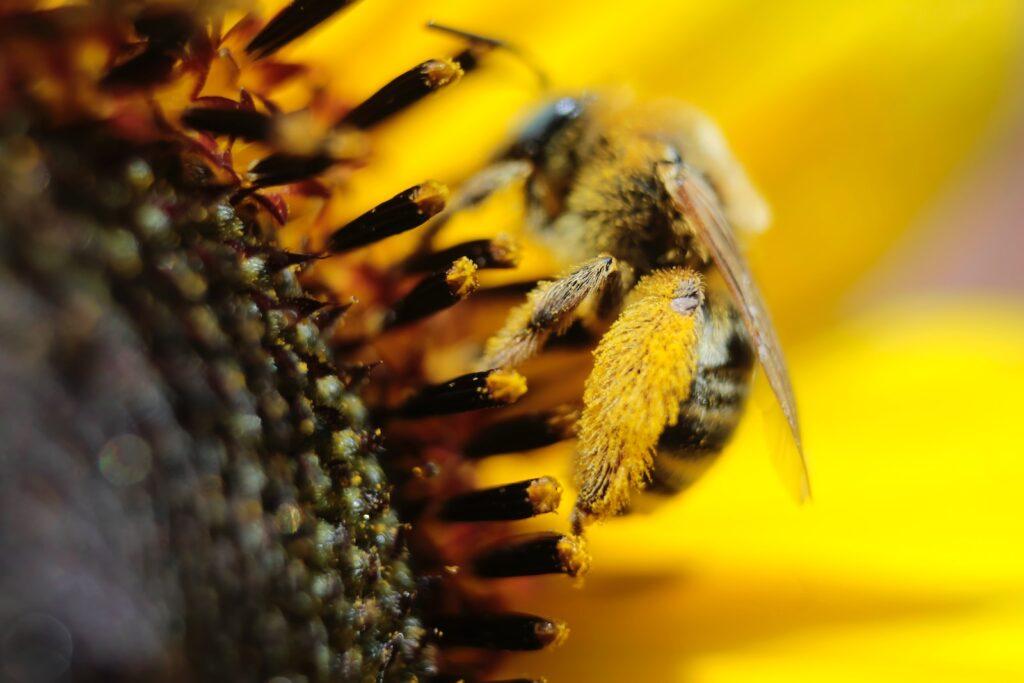
Soil Health: Preparing Your Soil for Organic Gardening
Test your soil to determine its composition and nutrient levels accurately.
Before you dive into organic gardening, it’s crucial to understand the current state of your soil. Testing your soil will provide valuable insights into its composition and nutrient levels, allowing you to make informed decisions about how to improve it. There are various ways to test your soil, from DIY kits available at garden centers to sending samples to a professional laboratory for analysis.
Once you receive the results, you’ll have a better understanding of what your soil needs. For example, if the test reveals that your soil lacks essential nutrients like nitrogen or phosphorus, you can address this by adding organic fertilizers or amendments. On the other hand, if the pH level is too high or too low, adjustments can be made using natural substances such as lime or sulfur.
Enhance soil fertility through composting, cover cropping, or green manure.
One of the key principles of organic gardening is building healthy and fertile soil. Composting is an excellent way to achieve this goal while also reducing waste. By collecting kitchen scraps, yard trimmings, and other organic materials in a compost bin or pile, you can create nutrient-rich compost that will nourish your plants.
Cover cropping is another effective technique for improving soil fertility. By planting specific crops like clover or buckwheat during fallow periods or between growing seasons, you can prevent erosion and add organic matter when these plants are eventually turned back into the ground.
Green manure involves intentionally growing certain plants solely for their ability to enrich the soil. Legumes such as peas and beans have nitrogen-fixing bacteria in their root systems which convert atmospheric nitrogen into a form usable by plants. When these legumes are incorporated into the soil before they reach maturity, they release nitrogen and other beneficial nutrients.
Improve drainage by adding organic matter like compost or aged manure.
Proper drainage is essential for healthy plant growth. If your soil retains too much water, it can lead to root rot and other issues. To improve drainage, incorporate organic matter into the soil. Compost or aged manure can help break up compacted soil, allowing excess water to flow through more easily.
When adding organic matter, ensure that it is well-rotted and has a crumbly texture. Spread a layer of compost or aged manure on the ground and gently work it into the top few inches of soil using a garden fork or tiller. This will not only enhance drainage but also provide additional nutrients for your plants.
Maintain proper pH levels by amending acidic or alkaline soils accordingly.
Soil pH plays a crucial role in plant health as it affects nutrient availability. Most vegetables and fruits thrive in slightly acidic to neutral soils with a pH range of 6 to 7.5. However, different plants have varying preferences for acidity or alkalinity.
If your soil is too acidic (low pH), you can raise its pH level by adding substances like lime or wood ash. On the other hand, if your soil is too alkaline (high pH), you can lower its pH level by incorporating elemental sulfur or peat moss.
To determine the current pH level of your soil accurately, use a soil test kit or send samples to a laboratory for analysis. Once you know the existing pH, you can make appropriate amendments to create an optimal environment for your plants.
Support beneficial microorganisms in the soil through natural amendments.
A thriving community of beneficial microorganisms in the soil contributes to overall plant health and productivity. These microorganisms help break down organic matter, release nutrients, suppress harmful pathogens, and improve soil structure.
To support these valuable allies in your garden, consider incorporating natural amendments such as compost tea or microbial inoculants into your soil management practices. Compost tea is made by steeping compost in water and then applying the liquid to your plants or soil. This introduces a diverse range of beneficial microorganisms into the ecosystem.
Microbial inoculants, on the other hand, are commercially available products containing specific strains of beneficial bacteria or fungi. These can be applied directly to the soil to enhance microbial activity and promote plant growth.
Choosing Your Seeds: Selecting Organic Seeds and Plants
One of the first decisions you’ll need to make is choosing the right seeds and plants. This is a crucial step in ensuring a successful and sustainable garden.
Prioritize open-pollinated seeds that allow for seed saving year after year.
Open-pollinated seeds are an essential component of organic gardening. These are seeds that can be saved from one growing season to the next, allowing you to maintain a self-sustaining garden. By prioritizing open-pollinated varieties, you not only save money on purchasing new seeds each year but also preserve genetic diversity within your plants.
Saving seeds from open-pollinated plants ensures that you have access to reliable and adapted varieties that have been naturally selected over time. These plants have developed specific traits suited to your local conditions, making them more resilient and productive. By saving these seeds, you contribute to the preservation of heirloom varieties and traditional plant diversity.
Look for certified organic seeds that are free from genetic modification or chemical treatments.
When selecting your seeds or seedlings, it’s crucial to choose those that are certified organic. Certified organic seeds guarantee that they have been produced without the use of synthetic fertilizers, pesticides, or genetically modified organisms (GMOs). By opting for certified organic options, you can be confident that your garden is truly natural and free from harmful chemicals.
Genetic modification has become increasingly prevalent in conventional agriculture but has no place in an organic garden. GMO crops may carry potential risks both for human health and environmental sustainability. By avoiding GMO seeds, you help protect biodiversity and support ethical farming practices.
Find heirloom varieties to preserve traditional plant diversity in your garden.
Heirloom varieties are an excellent choice for organic gardeners who value preserving traditional plant diversity. These are old cultivars that have been passed down through generations, often with a rich history and unique characteristics. By growing heirloom plants, you contribute to the conservation of genetic resources and help maintain our agricultural heritage.
Heirloom varieties come in a wide range of shapes, sizes, colors, and flavors. From vibrant tomatoes to ancient grains, there’s something for every gardener’s taste and interest. By cultivating these plants, you not only enjoy their exceptional qualities but also support the continuation of traditional farming practices.
Support local seed companies that specialize in organic seed production.
When purchasing your seeds or seedlings, consider supporting local seed companies that specialize in organic seed production. These companies play a vital role in promoting sustainable agriculture by providing high-quality organic seeds adapted to your specific region and climate.
Local seed companies have a deep understanding of the challenges and opportunities unique to your area. They carefully select varieties that thrive in your particular conditions, ensuring better success rates for your garden. Moreover, by choosing local seeds, you reduce the environmental impact associated with long-distance transportation.
Consider the specific needs of your region and climate when selecting seeds.
Different regions and climates have varying requirements. It’s essential to consider these factors when selecting your seeds or seedlings. Take into account the average temperature ranges, rainfall patterns, length of growing season, and soil conditions specific to your area.
Choosing seeds adapted to your region increases the likelihood of successful germination and growth. Local varieties are often more resistant to pests and diseases prevalent in your environment. They may require less water or be better suited for cold or hot temperatures compared to non-native species.
Embracing Companion Planting: Enhancing Plant Diversity
Companion planting is a key technique in organic gardening that allows you to maximize space utilization, repel pests naturally, attract beneficial insects, improve soil fertility, and create a visually appealing garden with diverse colors, textures, and heights. By planting compatible crops together, you can make the most of your garden’s potential and enjoy the benefits of this age-old practice.
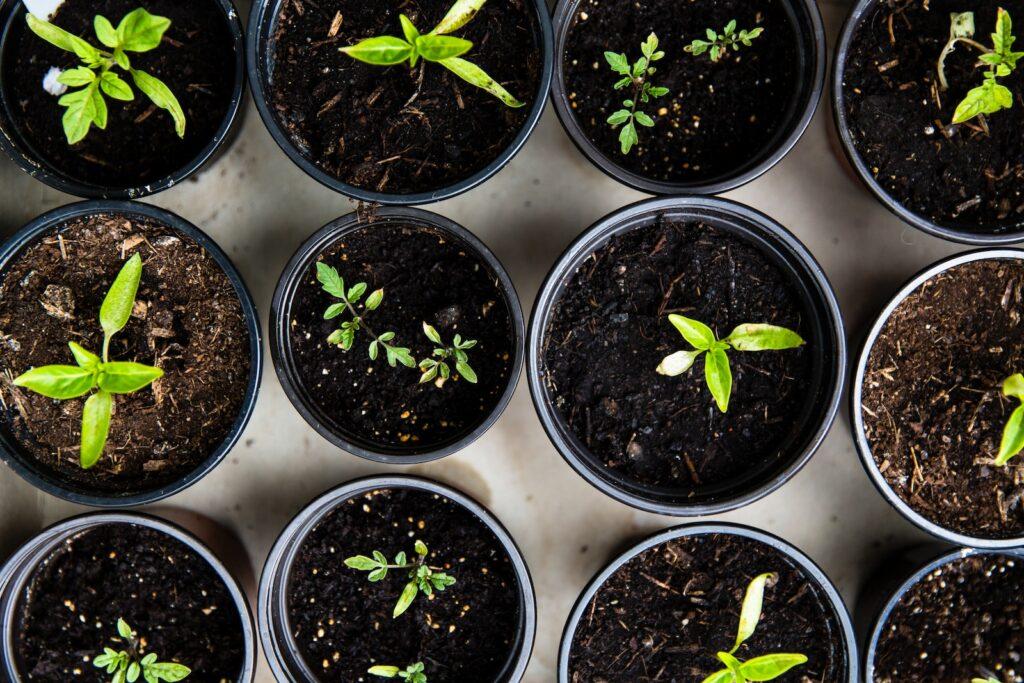
Maximize Space Utilization by Planting Compatible Crops Together
One of the advantages of companion planting is its ability to optimize space in your garden. By strategically pairing plants that grow well together, you can make efficient use of limited areas such as container gardens or small plots. For example, tall-growing plants like tomatoes can provide shade for shorter crops like lettuce or herbs. This way, you’re utilizing both vertical and horizontal space effectively.
Certain plant combinations can help deter pests by confusing them or masking the scent of vulnerable plants. For instance, interplanting onions with carrots helps repel carrot flies while also maximizing the use of available space. Similarly, combining climbing beans with corn creates a symbiotic relationship where the beans utilize the cornstalks for support while fixing nitrogen into the soil.
Repel Pests Naturally by Combining Plants with Natural Insect-Repellent Properties
Companion planting offers an organic approach to pest management by harnessing nature’s own defenses. Some plants possess natural insect-repellent properties that can be used to protect neighboring crops. For instance, marigolds emit a strong scent that deters many common garden pests such as aphids and nematodes. By interspersing marigolds among susceptible plants like tomatoes or peppers, you create a barrier against unwanted visitors without relying on chemical pesticides.
Similarly, aromatic herbs like basil or rosemary act as natural repellents for mosquitoes and other insects when planted near seating areas or outdoor dining spaces. Not only do these herbs add flavor to your culinary endeavors, but they also provide a pleasant aroma while keeping pests at bay.
Attract Beneficial Insects that Help Control Garden Pests through Companion Planting
Companion planting not only repels pests but also attracts beneficial insects that aid in controlling garden pests. By incorporating plants that attract pollinators and predators of common pests, you create a balanced ecosystem within your garden. For example, planting flowers such as lavender or sunflowers alongside vegetables can attract bees and other pollinators, ensuring better fruit set and higher yields.
Certain plants like dill or fennel act as host plants for beneficial insects such as ladybugs or lacewings, which feed on aphids and other destructive pests. By providing these insects with a habitat and food source, you encourage their presence in your garden and reduce the need for chemical interventions.
Improve Soil Fertility by Pairing Plants That Have Complementary Nutrient Requirements
Companion planting offers an opportunity to improve soil fertility by pairing plants with complementary nutrient requirements. Some crops are heavy feeders, depleting specific nutrients from the soil, while others have the ability to fix nitrogen or accumulate minerals. By alternating between these types of plants in your garden beds or containers, you can maintain a balanced nutrient cycle.
For instance, legumes like peas or beans have symbiotic relationships with nitrogen-fixing bacteria in their root nodules. When these plants are grown alongside nitrogen-demanding crops like leafy greens or brassicas (cabbage family), they contribute nitrogen to the soil through natural biological processes. This reduces the need for synthetic fertilizers while promoting healthier plant growth.
Create a Visually Appealing Garden with Diverse Colors, Textures, and Heights
In addition to its practical benefits, companion planting allows you to create visually appealing gardens that engage all senses. Mixing different varieties of plants with diverse colors, textures, and heights adds interest and beauty to your outdoor space. For example, combining vibrant flowers like zinnias or cosmos with the deep green foliage of herbs creates an eye-catching display.
Consider planting cascading plants like nasturtiums along the edges of containers or raised beds to provide a trailing effect. This not only enhances the visual appeal but also maximizes the use of vertical space. Experiment with different combinations and arrangements to create a garden that reflects your personal style while promoting plant diversity.
The Power of Plant Diversity and Crop Rotation: Planning Your Crops
Crop rotation is a fundamental practice in organic gardening that offers a multitude of benefits for your plants, soil health, and overall garden productivity. By strategically planning your crops and rotating them each year, you can prevent soil-borne diseases, break pest cycles, optimize nutrient uptake, extend harvest periods, and maximize yields. Let’s delve into the power of plant diversity and crop rotation to help you plan your crops effectively.
Prevent Soil-Borne Diseases
One of the key advantages of crop rotation is its ability to prevent soil-borne diseases. By rotating crops in different plant families each year, you disrupt the life cycles of pathogens that may have built up in the soil. This prevents the recurrence of diseases that target specific plant species. For example, if you planted tomatoes in one bed this year, it’s best to avoid planting tomatoes or any other nightshade family plants in that same bed next year. Instead, opt for crops from unrelated families like legumes or brassicas to reduce the risk of disease transmission.
Break Pest Cycles
In addition to preventing diseases, crop rotation also helps break pest cycles. Pests often specialize in attacking specific plant varieties or families. By alternating susceptible and resistant plants in your garden through crop rotation, you create an unfavorable environment for pests to thrive consistently. For instance, if aphids were a significant problem on your lettuce last season, consider planting a different crop like onions or garlic in that area this time around. This disrupts their feeding patterns and reduces the chances of infestation.
Optimize Nutrient Uptake
Varying the types of crops grown in each bed or area optimizes nutrient uptake from the soil. Different plants have varying nutrient requirements; some are heavy feeders while others are light feeders. Through strategic planning and diversification of crops based on their nutrient needs, you can ensure that the soil’s nutrients are utilized efficiently. For example, legumes like peas and beans have a unique ability to fix nitrogen in the soil, benefiting subsequent crops that require higher nitrogen levels.
Extend Harvest Periods
Staggering planting times for different crop varieties is another advantage of crop rotation. By doing so, you can extend your harvest periods and enjoy a continuous supply of fresh produce throughout the growing season. Planting crops with varying maturation times ensures that you have a steady stream of vegetables or fruits ready for harvest at different intervals. For instance, if you plant multiple varieties of tomatoes with different maturity dates, you can savor their flavors over an extended period rather than having them all ripen at once.
Maximize Yields through Strategic Planning
Strategic planning of crop succession throughout the growing season allows you to maximize yields in your organic garden. By carefully selecting and timing your crops, you can ensure that each bed or area remains productive year-round. Consider factors such as climate, time, light availability, and plant size when deciding which crops to grow together. For example, interplanting fast-growing greens like lettuce between slower-growing plants like peppers maximizes space utilization while providing an early harvest.
Organic Pest and Disease Control: Managing Pests Organically
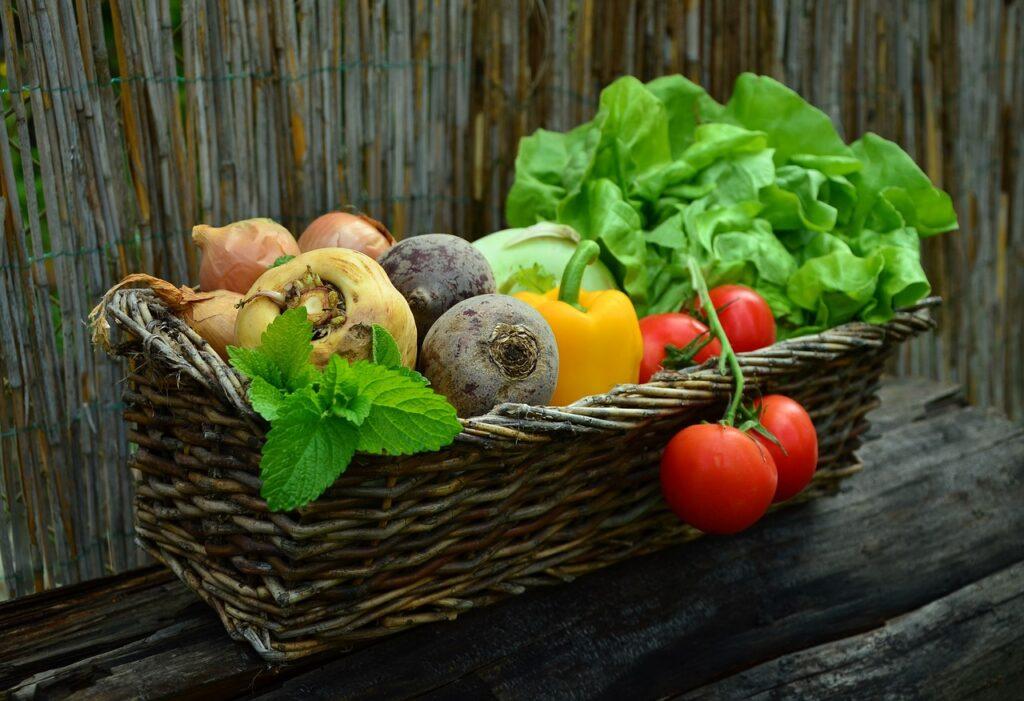
Encouraging Natural Predators for Pest Control
One of the best ways to control pests in your organic garden is by encouraging natural predators like ladybugs or birds. Ladybugs are voracious eaters of aphids, mites, and other harmful insects that can damage your plants. By creating an environment that attracts ladybugs, such as planting flowers like daisies or marigolds, you can ensure a steady population of these helpful insects.
Birds also play a crucial role in pest control. They feed on a wide range of garden pests, including caterpillars, slugs, and snails. To attract birds to your garden, provide them with food sources like bird feeders or birdbaths. You can also plant trees or shrubs that offer shelter and nesting sites for these feathered allies.
Using Physical Barriers for Insect Protection
Another effective method of organic pest control is using physical barriers to protect your plants from insects. Row covers made from lightweight fabric can be placed over your crops to prevent pests from reaching them. These covers allow sunlight and water to penetrate while keeping out unwanted visitors.
Netting is another useful tool for safeguarding plants against insect damage. It creates a barrier around vulnerable areas such as fruit trees or berry bushes, preventing pests like birds or squirrels from accessing the fruits. Make sure the netting is securely fastened to avoid any gaps where pests could sneak through.
Employing Organic Sprays as Deterrents
Organic sprays made from ingredients like neem oil or garlic are effective deterrents against garden pests. Neem oil acts as both an insecticide and fungicide, making it useful for controlling a wide range of pests and diseases. Garlic spray repels many common garden pests due to its strong odor.
To make neem oil spray, mix one tablespoon of neem oil with one quart of water and a few drops of liquid soap. Shake the mixture well and spray it onto your plants, focusing on the leaves and stems where pests are most likely to gather. Garlic spray can be made by blending several cloves of garlic with water, straining the mixture, and then spraying it onto your plants.
Practicing Good Sanitation for Disease Prevention
Good sanitation practices are essential for preventing the spread of diseases in your organic garden. Remove any infected plant material promptly to prevent the disease from spreading to healthy plants. This includes removing diseased leaves, stems, or fruits and disposing of them properly.
Regularly clean your gardening tools to avoid transmitting diseases from one plant to another. Use a solution of bleach or hydrogen peroxide diluted in water to sanitize your tools after each use. Practice crop rotation by planting different crops in different areas each year. This helps disrupt pest life cycles and reduces the risk of disease buildup in the soil.
Utilizing Companion Planting Techniques
Companion planting is an effective method for repelling pests without resorting to chemical intervention. Certain plants have natural properties that repel specific pests when grown nearby other susceptible crops. For example, marigolds emit a scent that deters aphids and nematodes, making them excellent companions for vegetables like tomatoes or peppers.
Similarly, planting aromatic herbs like basil or rosemary alongside susceptible plants can help deter insects such as mosquitoes or whiteflies. The strong scents these herbs produce act as natural repellents against these pests.
Organic Weed Control: Dealing with Weeds and Pests
Mulch Heavily Around Plants to Suppress Weed Growth Naturally
One effective method is to mulch heavily around your plants. Mulching not only helps retain moisture in the soil but also acts as a natural barrier against weeds. By applying a thick layer of organic mulch, such as straw, wood chips, or shredded leaves, you can smother weed seeds and prevent them from germinating.
The mulch creates an unfavorable environment for weeds by blocking sunlight and hindering their growth. As the organic mulch breaks down over time, it adds valuable nutrients to the soil, promoting healthier plant growth.
Hand-Pull Weeds Regularly Before They Have a Chance to Establish Deep Roots
In this ultimate guide to organic gardening, it’s crucial to address the importance of regularly hand-pulling weeds before they can establish deep roots. Weeds are notorious for spreading quickly and competing with your desired plants for resources like water and nutrients. By removing them early on, you can prevent them from overtaking your garden.
When hand-pulling weeds, make sure to grasp them firmly at the base near the soil surface. Gently pull upward while ensuring that you remove the entire root system. This method is particularly effective for annual weeds that have shallow roots.
Use Organic Weed Control Methods Like Vinegar-Based Sprays or Boiling Water Treatments
Organic weed control methods offer safe alternatives to chemical herbicides. One popular option is using vinegar-based sprays or boiling water treatments to target unwanted vegetation.
Vinegar-based sprays work by disrupting the cell membranes of plants upon contact. To create a homemade vinegar spray, mix equal parts white vinegar and water in a spray bottle and apply it directly onto the leaves of weeds on a sunny day. Be careful not to spray desirable plants as vinegar can damage them too.
Another organic weed control method is pouring boiling water directly onto weeds. This scalds the leaves and stems, effectively killing them. However, be cautious when using this method, as boiling water can also harm nearby plants or desirable vegetation.
Cultivate Healthy Soil That Promotes Strong Plant Growth, Reducing Weed Competition
To effectively control weeds in your organic garden, it’s crucial to cultivate healthy soil that promotes strong plant growth while reducing weed competition. Weeds often thrive in nutrient-poor or compacted soil, so improving the quality of your soil can help suppress their growth.
Start by regularly adding organic matter such as compost or well-rotted manure to enrich the soil with essential nutrients. This will provide a fertile environment for your desired plants while making it more challenging for weeds to establish themselves.
Consider practicing crop rotation and interplanting different species to disrupt weed life cycles and minimize their impact. By diversifying your garden and promoting biodiversity, you create an ecosystem where beneficial organisms can help control pests and reduce weed pressure naturally.
Embrace Manual Tools Like Hoes or Cultivators for Precision Weed Removal
Manual tools like hoes or cultivators are invaluable allies. These tools allow you to target specific weeds without disturbing the surrounding plants.
A hoe is a versatile tool that comes in various shapes and sizes. It works by slicing through the top layer of the soil, severing weeds from their roots. When using a hoe, aim for shallow cuts just below the surface to avoid bringing up dormant weed seeds from deeper layers of soil.
Cultivators are another useful tool for maintaining weed-free beds. They have sharp tines that loosen the topsoil while uprooting young weeds. By regularly cultivating your garden beds with these tools, you can prevent weeds from establishing themselves and maintain optimal growing conditions for your plants.
The Benefits of Using Organic Compost
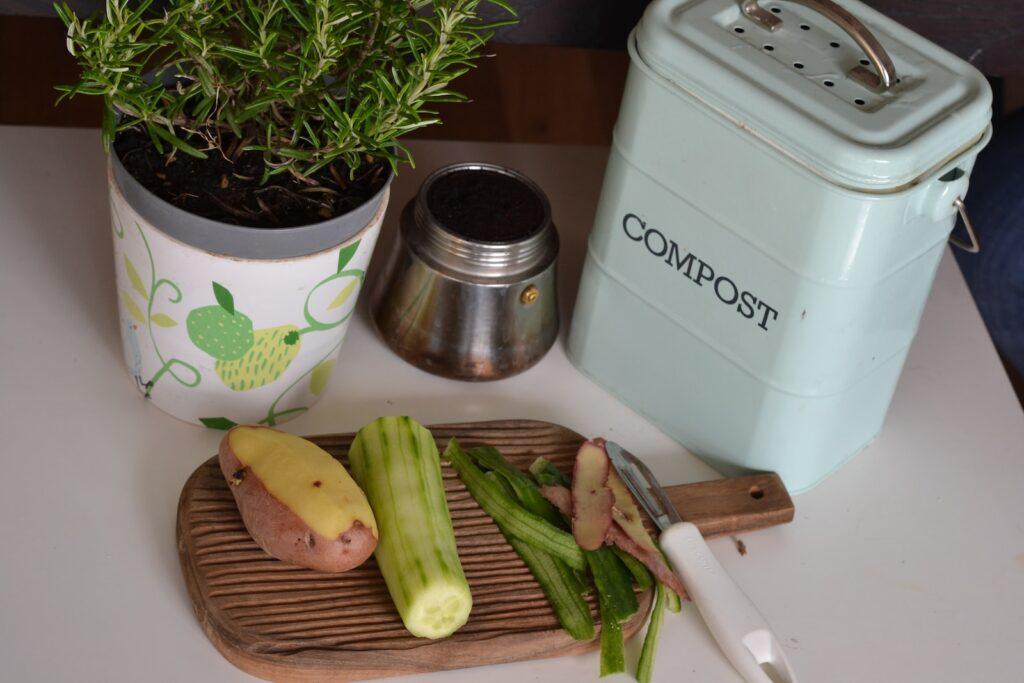
Improve Soil Structure and Drainage
Adding organic compost to your garden can work wonders for improving soil structure and drainage. Organic compost is rich in organic material, which helps loosen compacted soil and create a more porous environment. This allows for better water infiltration and root penetration, leading to healthier plants.
When organic material decomposes, it creates humus, a dark brown or black substance that binds soil particles together. Humus acts like glue, holding the soil particles in aggregates or clumps. These aggregates create spaces for air and water movement within the soil, preventing compaction and enhancing drainage.
By incorporating organic compost into your garden beds, you can transform heavy clay soils into friable loam that is easier to work with. This improved soil structure not only benefits your plants but also reduces erosion by allowing rainwater to penetrate the ground instead of running off.
Increase Nutrient Availability for Plants
One of the key advantages of using organic compost is its ability to provide a slow release of nutrients to plants. As the organic matter in the compost breaks down over time, essential nutrients such as nitrogen, phosphorus, and potassium become available to plant roots.
Unlike synthetic fertilizers that deliver an immediate nutrient boost but can quickly wash away or leach from the soil, organic compost releases nutrients gradually. This ensures a steady supply of nourishment throughout the growing season.
Organic material in compost also improves nutrient retention in the soil by binding minerals and preventing them from being washed away by rain or irrigation. This means less fertilizer runoff into water bodies, reducing pollution and protecting aquatic ecosystems.
Enhance Water Retention Capacity
Water scarcity is a concern for many gardeners, especially during dry spells or in regions with limited rainfall. By incorporating organic compost into your garden beds, you can significantly enhance water retention capacity.
Organic matter acts like a sponge in the soil, absorbing water and holding it for longer periods. This means less frequent irrigation is required, saving both water and time. The increased water-holding capacity of compost-amended soil also reduces the risk of plants experiencing drought stress.
Furthermore, organic compost promotes the formation of soil aggregates, which create larger pore spaces. These pores allow water to infiltrate deeper into the soil profile instead of running off the surface. As a result, plant roots can access moisture at greater depths, making them more resilient during dry periods.
Promote Beneficial Microbial Activity
Healthy soil teems with life, including an array of beneficial microorganisms that play vital roles in nutrient cycling and disease suppression. Organic compost provides a favorable environment for these beneficial microbes to thrive.
The organic material in compost serves as a food source for microorganisms such as bacteria and fungi. As they break down this organic matter, they release enzymes and byproducts that promote nutrient availability to plants. Some microbes form symbiotic relationships with plant roots, aiding in nutrient uptake.
Moreover, certain microorganisms present in organic compost help suppress harmful pathogens by competing for resources or producing antimicrobial compounds. This natural defense mechanism can reduce the incidence of plant diseases and minimize the need for chemical interventions.
Reduce Waste by Recycling Kitchen Scraps and Yard Trimmings
Organic gardening goes hand in hand with sustainability and waste reduction. By using organic compost, you can recycle kitchen scraps and yard trimmings into valuable nutrients for your garden instead of sending them to landfill.
Kitchen scraps like fruit peels, vegetable trimmings, coffee grounds, and eggshells are excellent sources of organic material that can be transformed into nutrient-rich compost through decomposition. Similarly, yard trimmings such as grass clippings and fallen leaves contribute to the mix.
Recycling these materials not only diverts waste from landfills but also closes the loop within your own garden ecosystem. Instead of relying solely on external inputs like synthetic fertilizers, you can harness the power of organic compost to nourish your plants while reducing your carbon footprint.
Step-by-Step Instructions for Starting Your Own Organic Garden
Choose a Suitable Location with Adequate Sunlight and Access to Water Sources
One of the first things you need to consider is choosing a suitable location. Look for an area in your yard that receives at least six hours of direct sunlight each day. This is crucial for the growth and development of your plants. Ensure that the chosen spot has easy access to water sources. Having a nearby water supply will make it convenient for you to irrigate your garden regularly.
Prepare Your Soil by Removing Weeds, Rocks, and Debris Before Planting
Before you start planting, it’s essential to prepare your soil properly. Begin by removing any weeds, rocks, and debris from the area where you plan to establish your organic garden. Weeds can compete with your plants for nutrients and water, so eliminating them beforehand will give your crops a better chance of thriving. Clearing away rocks and debris will create a clean surface for planting and prevent any obstructions that could hinder root growth.
Plan Your Garden Layout Based on Crop Requirements, Spacing, and Companion Planting
To maximize the productivity of your organic garden, careful planning is key. Consider the specific requirements of each crop you intend to grow – factors such as sunlight exposure, soil pH levels, and watering needs should be taken into account when designing your garden layout. Pay attention to proper spacing between plants to avoid overcrowding which can lead to poor air circulation and increased risk of diseases. Incorporating companion planting techniques can also be beneficial as certain plant combinations can enhance growth while deterring pests naturally.
Start Seeds Indoors or Purchase Healthy Seedlings from Reputable Sources
Now that you have prepared the soil and planned out your garden layout, it’s time to start growing! There are two main options: starting seeds indoors or purchasing healthy seedlings from reputable sources. Starting seeds indoors allows you to have more control over the growing conditions and gives your plants a head start before transplanting them outdoors. On the other hand, purchasing seedlings can save you time and effort, especially if you are new to gardening or have limited space for starting seeds indoors. Ensure that the source of your seedlings is reputable to avoid introducing pests or diseases into your garden.
Follow Proper Transplanting Techniques to Ensure Successful Establishment in the Garden
Following proper techniques is crucial for their successful establishment. Start by digging a hole large enough to accommodate the root ball of each plant. Gently remove each seedling from its container, being careful not to damage the delicate roots. Place the seedling into the hole and backfill with soil, ensuring that it is firmly packed around the base of the plant. Water thoroughly after transplanting to help settle the soil around the roots and reduce any potential stress on the plants.
Embrace Organic Gardening and Reap the Rewards
Organic gardening is not just a trend; it’s a way of life that brings numerous benefits to both you and the environment. By understanding the essence of organic gardening, preparing your soil, selecting organic seeds, embracing companion planting, planning your crops strategically, managing pests and diseases organically, controlling weeds naturally, and utilizing organic compost, you can create a thriving garden that is sustainable and eco-friendly.
One of the key benefits of organic gardening is its positive impact on the environment. By avoiding synthetic fertilizers and pesticides, you contribute to reducing water pollution and preserving biodiversity. Organic gardening practices also promote healthy soil ecosystems by encouraging beneficial microorganisms and earthworms to thrive. This leads to improved soil structure, moisture retention, and nutrient availability for your plants.
Understanding the essence of organic gardening means working with nature rather than against it. Instead of relying on chemical inputs, organic gardeners focus on building a balanced ecosystem where plants can grow naturally. This involves nurturing soil health through proper amendments and mulching techniques while fostering plant diversity through companion planting.
Preparing your soil is crucial for successful organic gardening. By enriching it with compost or well-rotted manure, you provide essential nutrients for your plants without relying on synthetic fertilizers. Incorporating cover crops into your rotation plan helps improve soil structure and fertility over time.
Choosing organic seeds ensures that you start your garden off on the right foot. These seeds are free from genetically modified organisms (GMOs) or treated with chemical coatings. By opting for organic varieties adapted to your local climate conditions, you increase the chances of success in growing healthy plants.
Companion planting is another valuable practice in organic gardening. By strategically placing compatible plants together, you can enhance pest control by attracting beneficial insects or repelling harmful ones naturally. This method also optimizes space utilization in your garden while promoting biodiversity.
Plant diversity plays a crucial role in organic gardening. By rotating crops each season and avoiding planting the same species in the same spot year after year, you reduce the risk of pest and disease buildup. This practice also helps maintain soil fertility and balance nutrient demands.
Managing pests organically is an essential aspect of organic gardening. Instead of relying on chemical pesticides, you can use natural alternatives such as neem oil or insecticidal soap to control common garden pests. Beneficial insects like ladybugs or praying mantises can also be introduced to your garden to help keep pest populations in check.
Weed control is another challenge that organic gardeners face, but there are effective methods available that don’t involve harmful herbicides. Mulching with organic materials like straw or wood chips can help suppress weed growth while conserving soil moisture. Regular hand weeding and using tools like hoes or cultivators can also aid in keeping weeds at bay.
Utilizing organic compost is a key component of successful organic gardening. Compost enriches the soil with essential nutrients, improves its structure, and enhances water retention capacity. By recycling kitchen scraps, yard waste, and other organic materials, you can create nutrient-rich compost that will nourish your plants naturally.
Now that you have gained valuable insights into the world of organic gardening, it’s time to put your knowledge into action! Follow these step-by-step instructions for starting your own organic garden and enjoy the rewards of growing your own healthy produce while contributing to a sustainable future.
FAQs
Q: How long does it take for an organic garden to start producing?
A: The timeline for an organic garden to start producing depends on various factors such as plant types, growing conditions, and seasonal variations. Generally, you can expect to see some harvestable produce within 2-3 months after planting.
Q: Can I use chemical fertilizers occasionally in my organic garden?
A: No, chemical fertilizers are not recommended in organic gardening. They can disrupt the balance of nutrients in the soil and harm beneficial microorganisms. Stick to natural fertilizers like compost or organic amendments for optimal results.
Q: Are organic gardening practices more time-consuming than conventional methods?
A: Organic gardening does require some additional effort, such as preparing compost and managing pests naturally. However, with proper planning and routine maintenance, it can be just as efficient as conventional gardening methods.
Q: Can I grow ornamental plants using organic gardening techniques?
A: Absolutely! Organic gardening principles can be applied to both edible and ornamental plants. By avoiding synthetic chemicals, you create a healthier environment for all types of plants to thrive.
Q: Is organic gardening suitable for small spaces like balconies or patios?
A: Yes, organic gardening can be adapted to various sizes of spaces, including balconies or patios. Container gardening or vertical growing techniques are excellent options for maximizing limited space while still enjoying the benefits of organic practices.
Amazon and the Amazon logo are trademarks of Amazon.com, Inc, or its affiliates.

